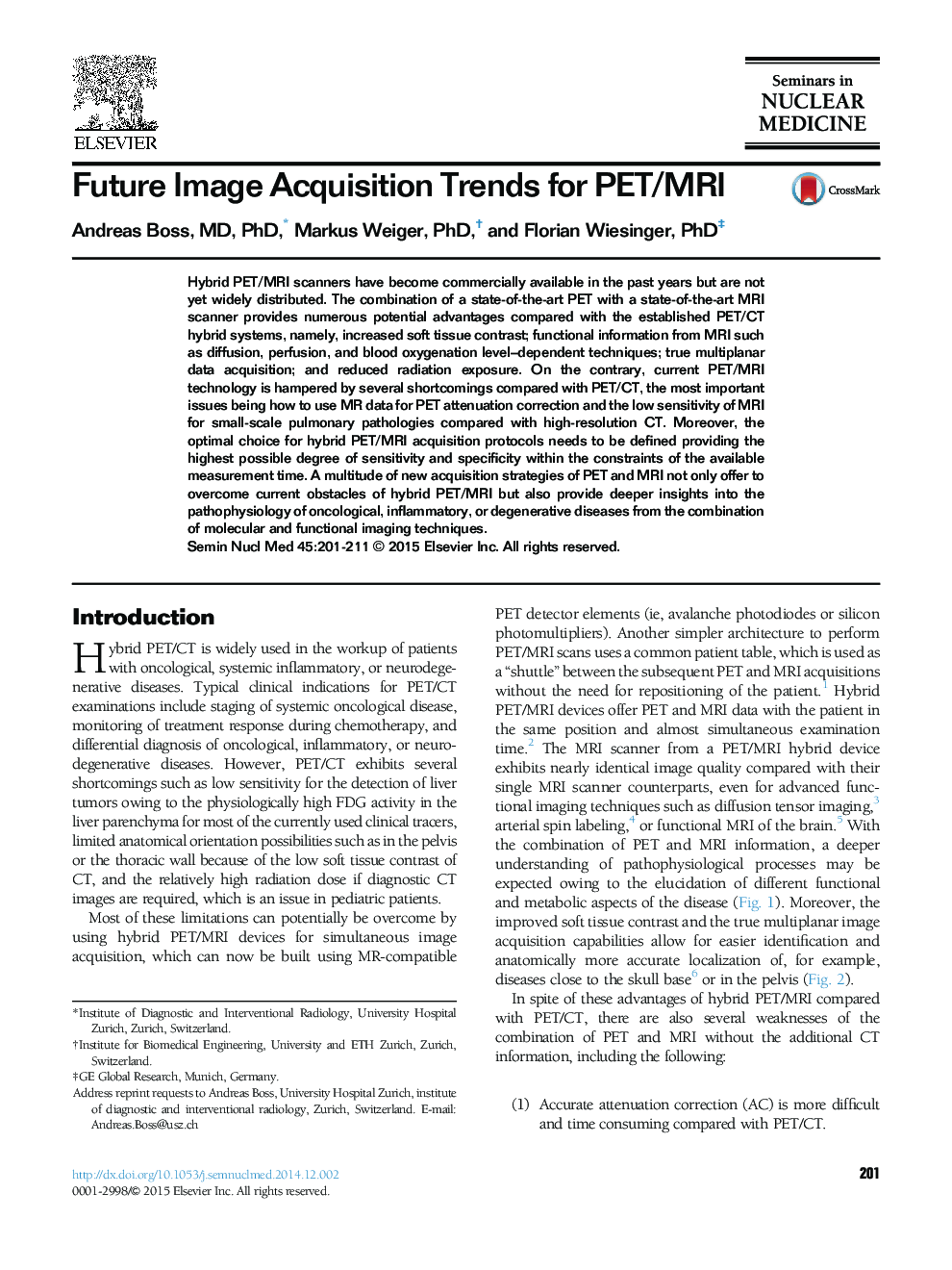| Article ID | Journal | Published Year | Pages | File Type |
|---|---|---|---|---|
| 4250974 | Seminars in Nuclear Medicine | 2015 | 11 Pages |
Hybrid PET/MRI scanners have become commercially available in the past years but are not yet widely distributed. The combination of a state-of-the-art PET with a state-of-the-art MRI scanner provides numerous potential advantages compared with the established PET/CT hybrid systems, namely, increased soft tissue contrast; functional information from MRI such as diffusion, perfusion, and blood oxygenation level–dependent techniques; true multiplanar data acquisition; and reduced radiation exposure. On the contrary, current PET/MRI technology is hampered by several shortcomings compared with PET/CT, the most important issues being how to use MR data for PET attenuation correction and the low sensitivity of MRI for small-scale pulmonary pathologies compared with high-resolution CT. Moreover, the optimal choice for hybrid PET/MRI acquisition protocols needs to be defined providing the highest possible degree of sensitivity and specificity within the constraints of the available measurement time. A multitude of new acquisition strategies of PET and MRI not only offer to overcome current obstacles of hybrid PET/MRI but also provide deeper insights into the pathophysiology of oncological, inflammatory, or degenerative diseases from the combination of molecular and functional imaging techniques.
